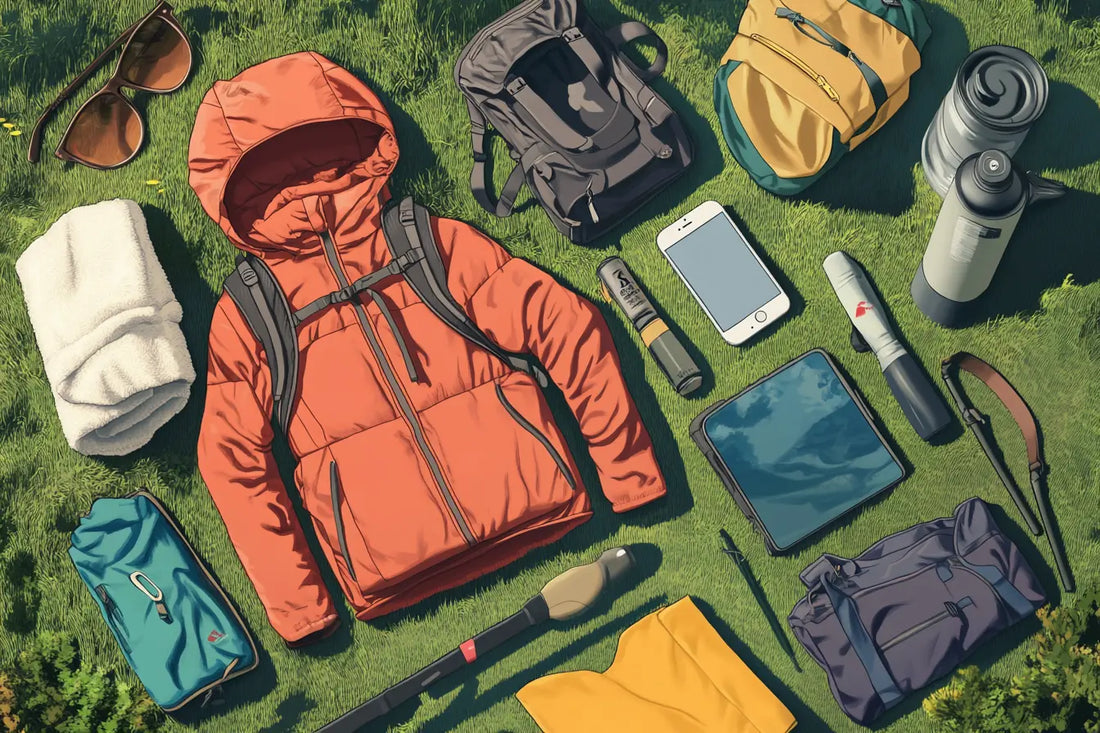
Essential Packing Guide for Your Mountain Adventure
Share
Proper packing is fundamental to both your safety and enjoyment on the trail. Our approach combines years of mountain experience with practical wisdom to help you prepare for your journey. This guide shows our recommended packing strategy, starting with essential items and building up to optional comfort additions.
Our Packing Philosophy
Safety is paramount, comfort is negotiable. This principle guides all our packing recommendations.
Mountain weather is notoriously unpredictable - we've experienced all four seasons in a single day on many of our trails. Local conditions can change rapidly, and even the best forecasts aren't always accurate. Whether you're dealing with unexpected weather, a minor injury, or helping another hiker in need, you must be prepared for any situation.
Why Pack Light?
The weight of your pack significantly impacts both your safety and enjoyment:
- Improved balance and stability, especially on technical descents
- Reduced fatigue, leading to better decision-making
- Faster travel times, allowing you to reach shelter before weather changes
- Less strain on your joints and muscles
- Better agility on challenging terrain
Essential Gear List
Hear is our recommended minimum gear list, featuring lightweight options from our friends at Alpkit:
Carrying & Protection
- Rucksack (25-30 litres): Gourdon 20 waterproof backpack (350g)
- Dry bag: Airlok 13L (50g)
- Waterproof jacket with hood: Sigma Jacket (300g)
- Waterproof over-trousers: Parallax Trousers (200g)
Clothing Layers
- Full-length trousers/leggings: Arnison Trousers (150g)
- Insulated layer: Filoment Hoody (300g)
- Warm hat: Mountain Beanie (50g)
- Gloves: Shiel Gloves (50g)
Safety & Navigation
- Phone charger (USB plug + cable) - 100g
- Head torch: Quark (100g)
- Survival bag: Hunka Bivvy (350g)
- Water bottle: MytiMug 400 (65g)
- Compass: Type 4 (50g)
- Backup map (waterproof paper)
- Printed itinerary (waterproof paper)
- Emergency whistle (10g)
- Emergency food (500g)
- Smartphone (200g)
- Power bank: Juice Tank (150g)
- First aid kit (180g)
Protection
- Sunglasses (30g)
- Sunscreen (50g)
Total base weight: approximately 3.2kg
Recommended Comfort Items
These additional items add minimal weight (under 500g total) but significant comfort:
- Sleep wear (lightweight boxer shorts) - 80g
- Basic toiletries (travel-sized) - 100g
- Spare hiking socks - 60g
- Compact headphones - 50g
Why We Don't use Baggage Transfer Services Ourselves
There are nine (yes, nine!) reasons we believe in carrying our own equipment for several important reasons:
- Complete independence and flexibility to adapt to changing conditions
- No need to reach specific checkpoints by set times
- Freedom to modify your route based on weather or energy levels
- Reduced environmental impact
- Development of self-reliance and mountain craft skills
- Consistent access to all your safety equipment
- Considerable cost savings
- Remove logistical worries of pick up and drop off
- No worries about lost luggage
Material Choices
When selecting clothing, prioritise:
- Fast-drying synthetic materials
- Merino wool (excellent warmth-to-weight ratio, even when wet)
- Avoid cotton except for optional sleep/evening wear
- Lightweight, packable items that serve multiple purposes
Evening Comfort Strategy
In accommodations, you can:
- Use provided slippers/house shoes
- Wear your dry layers as evening wear
- If gear is wet, use available drying facilities
- Layer your waterproof pants over sleep wear if needed
Remember: This gear list has been refined through years of mountain experience and is designed to keep you safe while maximizing your enjoyment of the journey. While it might seem minimal, each item has earned its place in your pack through practical necessity.
For specific product recommendations or additional packing advice, please don't hesitate to contact our team.
